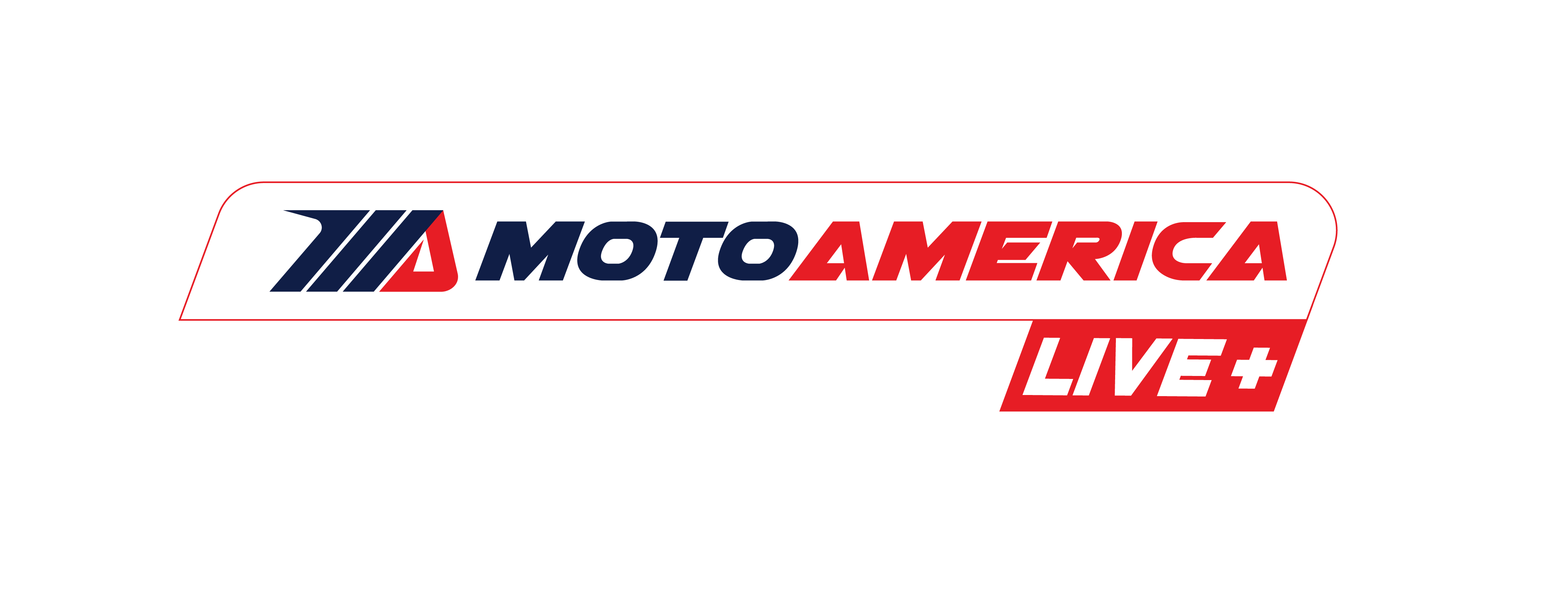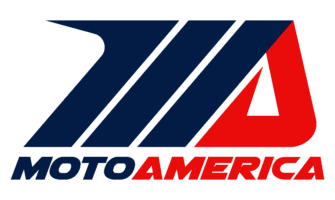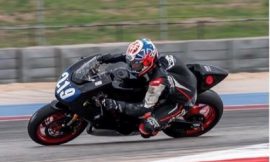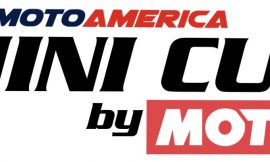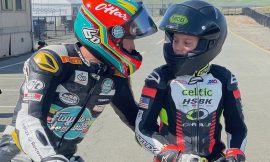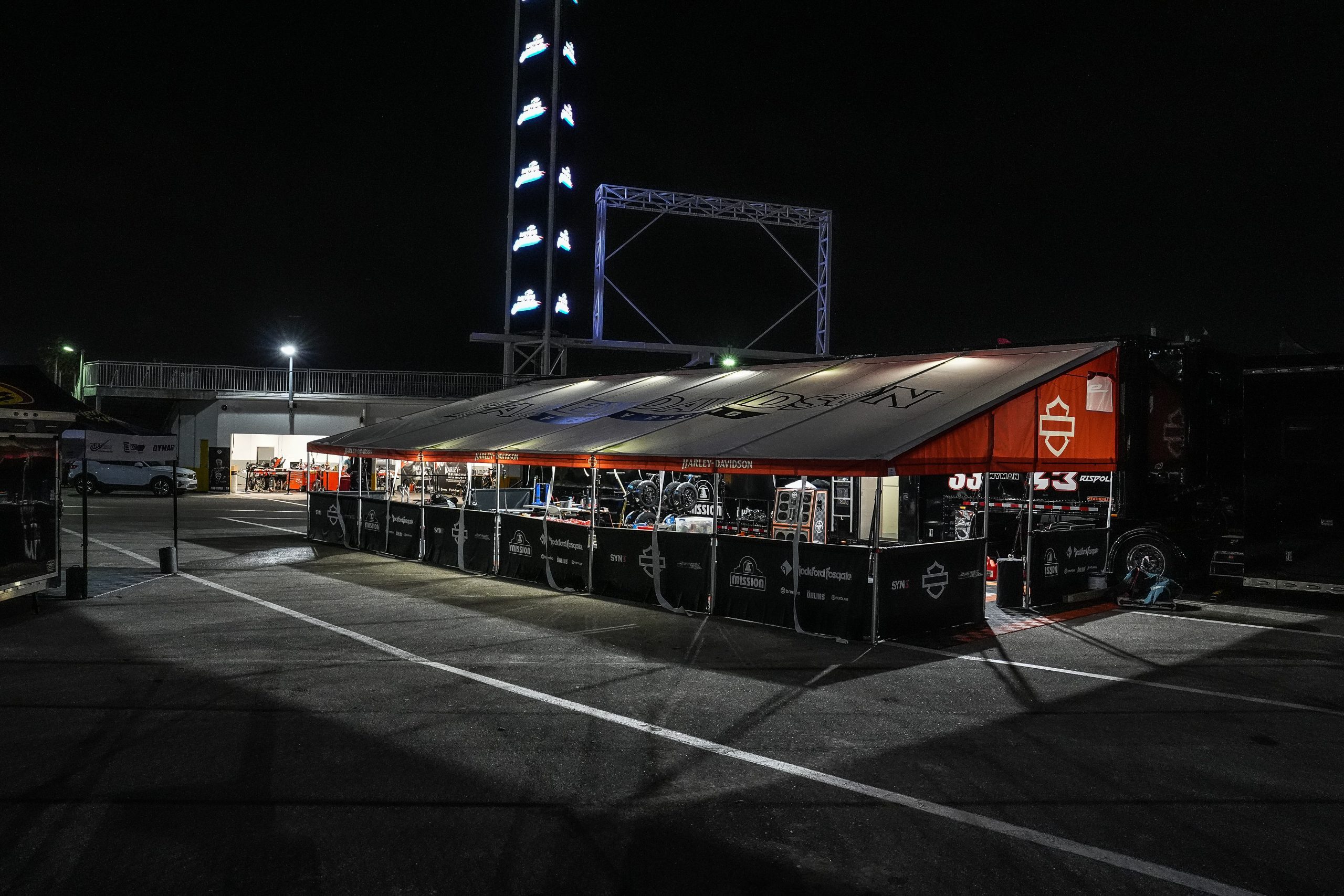
Like moths to a flame, a select group of Harley-Davidson personnel was drawn to the Factory Racing team’s illuminated canopy and transporter. They say nothing good happens in the world at three o’clock in the morning, but I beg to differ. On Thursday night into Friday morning two weeks ago at Daytona International Speedway, some very good things happened. The best of things, in fact. To find out what went on, I talked to one of the men who was there, Jason Kehl, Harley-Davidson Director of Racing. Here’s the interview:
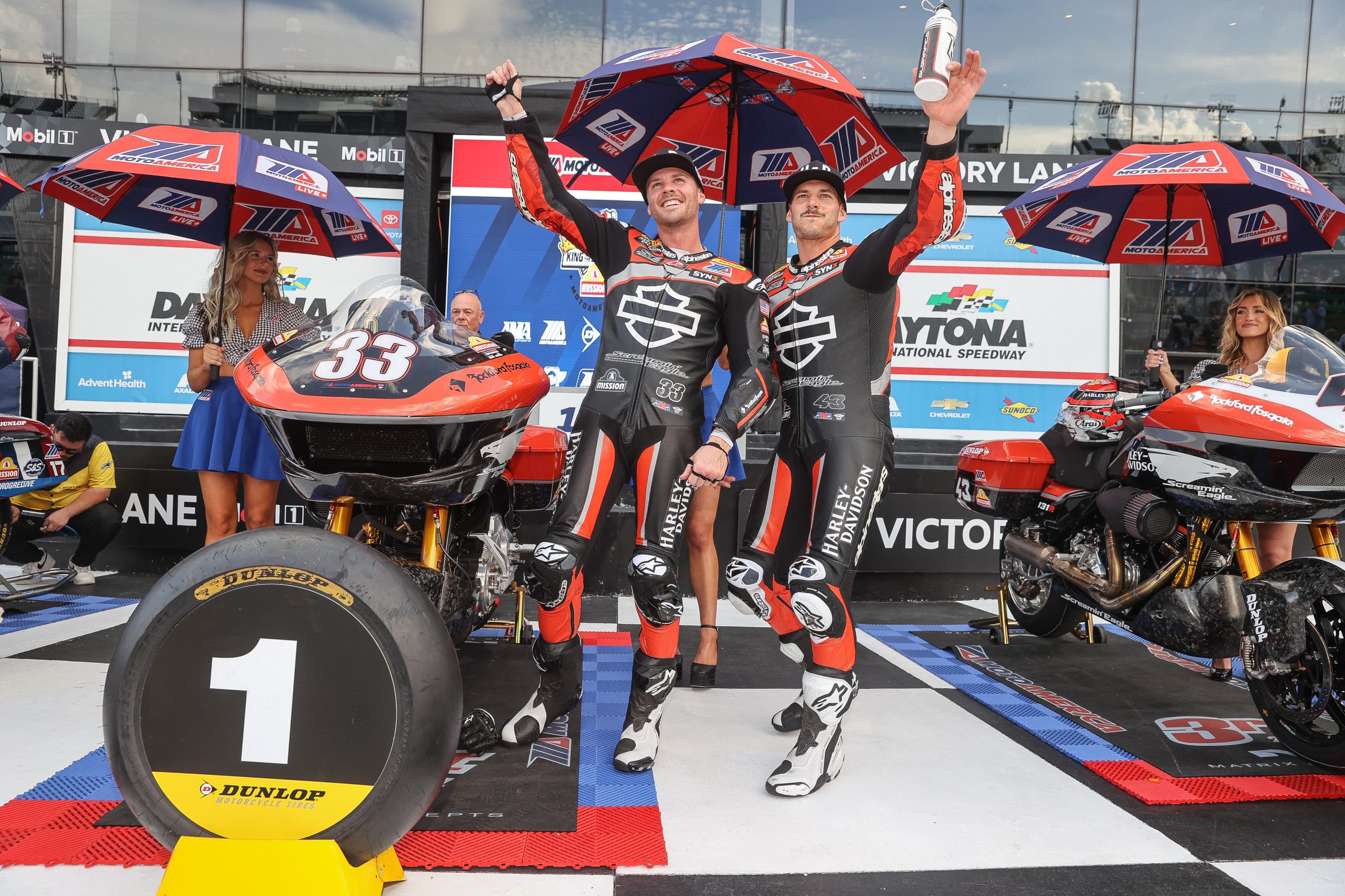
Q:
Let’s talk about Daytona. Specifically, how it started and how it ended for the Harley-Davidson Factory Racing team. From what I understand, it ended a lot better than it started. Is that an accurate assessment?
Kehl:
Absolutely. We were pretty happy with the result that we came out with. Obviously, it couldn’t have been much better. As a team, we had a total of 90 points on the table, and we took away 82. So, that’s a pretty good start to the season. Certainly, better than we’ve had the past couple years. Daytona has been a big challenge for us. Our only mechanical DNF’s the past two seasons have been at Daytona.
Q:
What is it about Daytona International Speedway? Is it the higher RPM going around the track, and the top speed? The top speed this year was 185.5 miles per hour. I was looking at the top speeds reached in Mission King Of The Baggers just two years ago, and it was 171.5 miles per hour. That’s an increase of 14 miles per hour in top speed at Daytona in just two years. Pretty incredible.
Kehl:
Yeah, that one number in and of itself tells you about the advancement of the class when, really, the rules haven’t changed significantly. MotoAmerica has made some amazing changes that helped from a reliability and durability standpoint, but from a performance standpoint, the core of the engine architecture has not changed since they implemented rev limits two years ago. So, the progression you see is really in the development of the teams within the motorcycles, not from a rules standpoint. A top speed of 185.5 miles per hour is just crazy. The fastest motorcycles on the track all weekend were the ones racing in King of the Baggers. Kyle Wyman is a former Daytona 200 winner, and he’d never gone that fast around Daytona before this year.
Q:
That’s a good point. Two years ago, the Daytona 200 Supersport bikes were a little bit faster than the Baggers, but that’s not the case anymore. This year, the top speed reached for the Supersport bikes was 184.3 miles per hour versus 185.5 miles per hour for the Baggers.
Kehl:
What’s unique about the track is, really, a couple things. If you look at the total lap time and the percentage the rider is using wide-open throttle, it’s not significantly more than at the other tracks we go to, but the sustained pulls at wide-open throttle are much longer. We’re looking in the 25-second range at Daytona compared with 15 or 16 seconds at tracks like Road America or COTA. So, it is significantly sustained higher RPM. Then, of course, you add in the challenges of the banking. So, you’re going around, and you’re sitting at 31 degrees on the motorcycle, but then, you’re also leaned over on the motorcycle a little bit. We were doing some rough calculations based on top speeds of about 170 miles an hour through the steepest part of the banking. That’s almost 2 G’s of force that the rider is feeling, and of course the motorcycle is feeling that, as well. So internal operation of the engine is very different at Daytona than it is anywhere else.
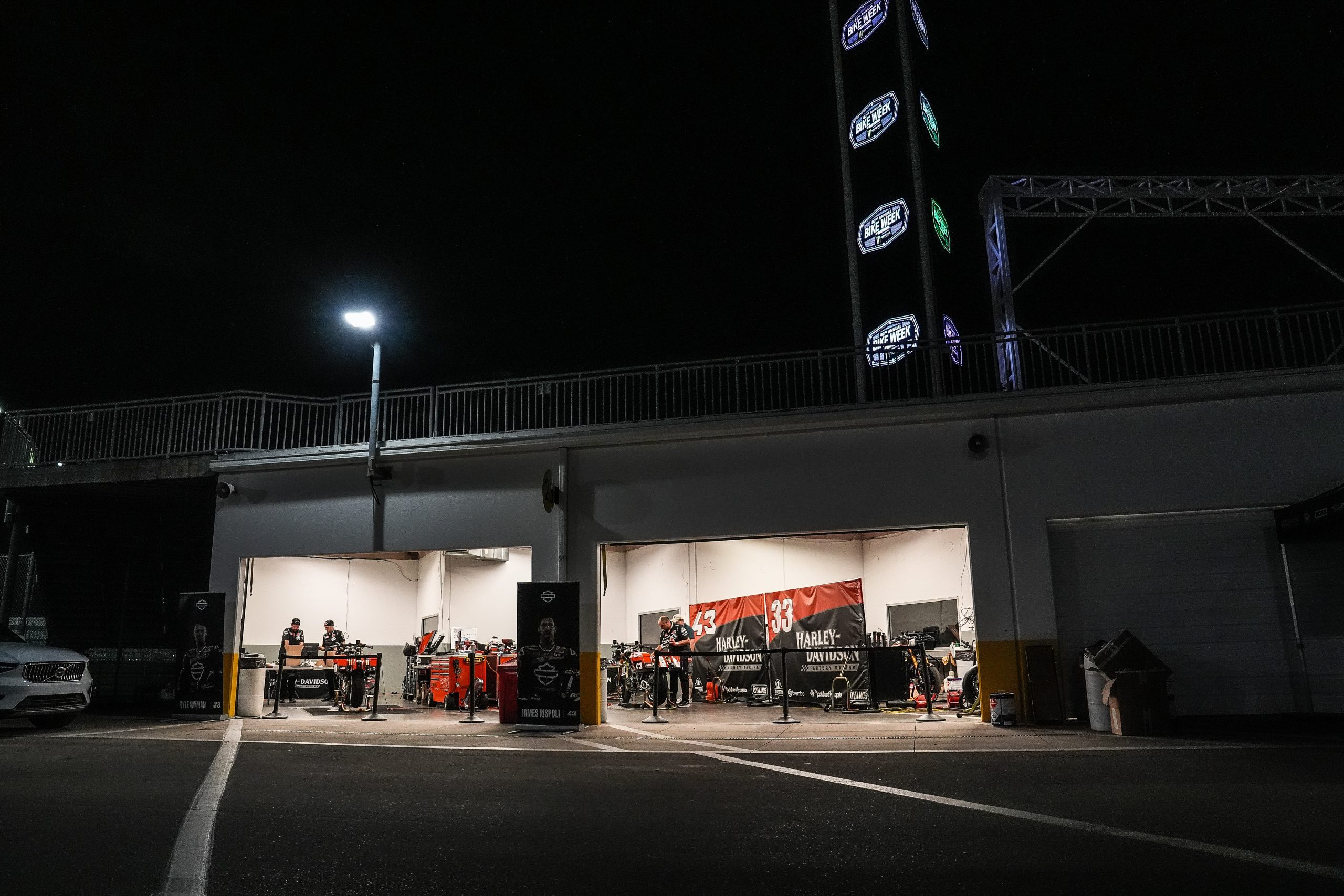
Q:
That really makes it unusual. So, let’s talk about the weekend. I heard that you ended up flying someone down from Milwaukee in the middle of the night. Is that right?
Kehl:
Correct. We had one individual, in particular. Tom Schultz is his name, and he’s one of our development technicians at the Product Development Center. We had some surprise findings on Thursday at Daytona. During the off-season, we put a lot of development effort into Daytona and getting things right, since it’s where we’ve struggled the previous two years. That’s what racing teaches you. As soon as you think you’ve got it figured out, racing will tell you that you’re not nearly as smart as you think you are.
That’s what it told us on Thursday. But certainly, we have a very strong team, and based on all that development work over the previous three seasons, we had a pick list of different components we’ve seen perform better in different situations. Unfortunately, not all of those components were on the trailer. So, we called Tom and begged him to fly down with some parts we needed. He landed in Orlando at 12:40 in the morning. We picked him up at the airport and drove him straight to the track. I think he arrived at the track at about 2:45 a.m.
We worked through the night and into the morning, and we were able to rebuild those engines with the most reliable configuration we could put together, with everything that we’ve developed over the previous three seasons to get through Friday’s and Saturday’s qualifying sessions and races. Of course, none of this is possible without the belief from our leadership that we could figure it out. A special thanks to our CEO Jochen Zeitz, who supported us with whatever we needed.
Q:
Wow. You got everything ready in time for final qualifying on Friday, the two-lap Mission King Of The Baggers Challenge, and the two feature races on Friday and Saturday. That’s incredible. So, you guys discovered the issue on Thursday. Tom came down Friday morning early, and he worked all through the night and got everything ready to go in time. You guys didn’t miss a session on Friday at all, then, right?
Kehl:
Correct. We finished everything in time for Qualifying 2.
Q:
What did that involve? You’ve got two riders, so you must have had to rebuild two engines? Did that involve taking them both completely apart and building them again?
Kehl:
Correct. We tore down two complete engines, one for each bike, and we rebuilt both of them. Then, the engines had to be reinstalled into the motorcycles in time for Q2. We custom-made parts in the trailer, Tom brought a few things with him down from Milwaukee, and we even borrowed parts from Team Saddlemen.
Q:
And, those engines, were they good to go for the remainder of the Daytona event?
Kehl:
Yes.
Q:
So, you ran them in qualifying. You ran them in the Challenge. You ran them in two races and there was no issue. Whatever you experienced on Thursday, it didn’t come up the rest of the weekend after Tom came down, and you guys went to work?
Kehl:
Correct. We did not see that issue again. Or, moreover, we were able to manage the issue to keep the bikes on track in a condition to not only run safely, but competitively, as well.
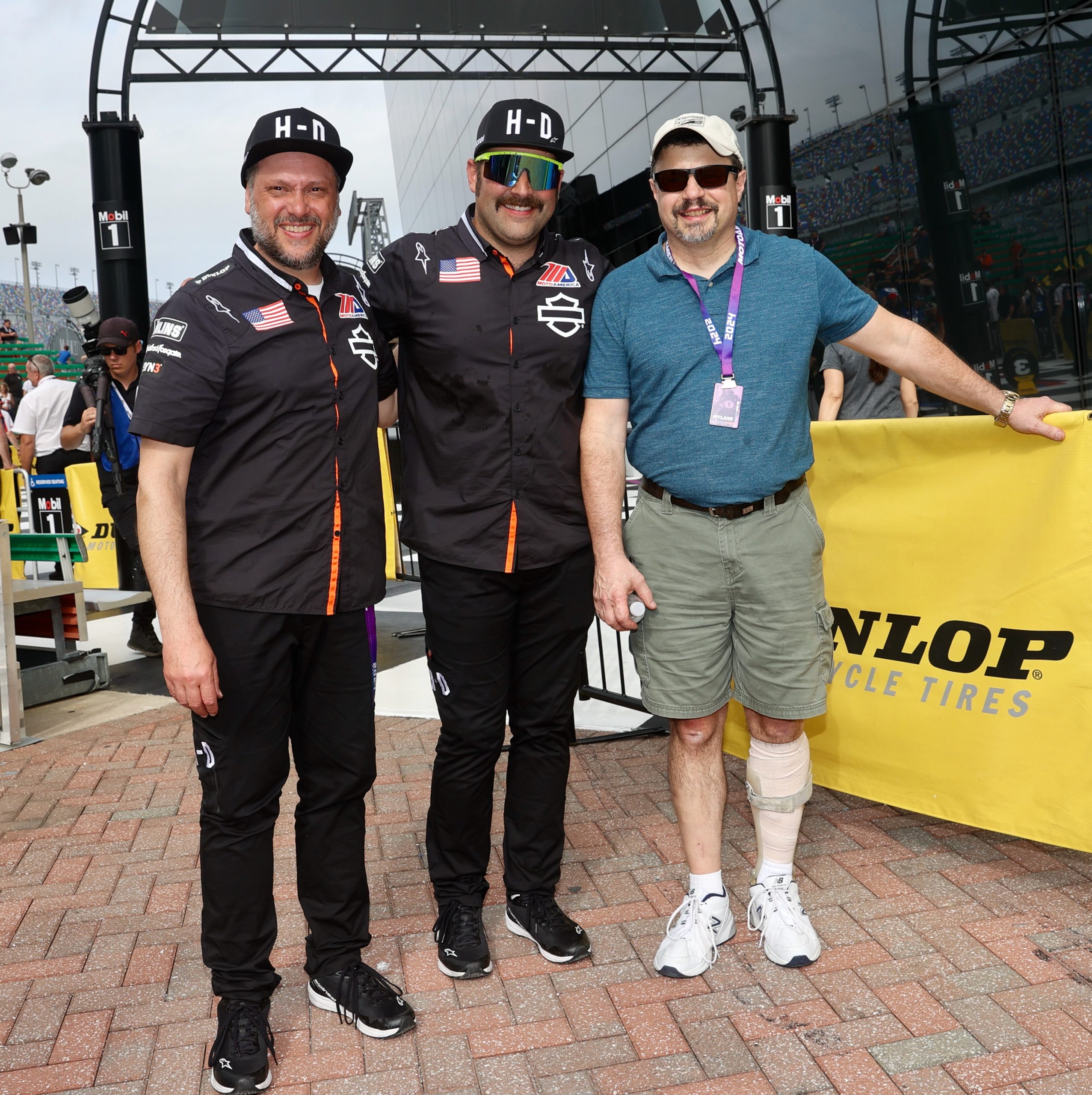
Q:
The lights were on all night underneath the canopy and in your transporter. Who was working with Tom on the engines?
Kehl:
At some point, every team member had a significant role over the weekend. Thursday evening, we split the team into shifts to work most efficiently. In the photo you are referencing, there are four people. Carl Vandervort who is our technical lead overall for the racing program; Matt Mueller, who is our powertrain development lead engineer; Tom Schultz, who is our development technician from the PDC; and then, me.
Q:
So, essentially, you were up all night Thursday night into Friday morning?
Kehl:
Yes. The engines were rebuilt and ready to go by 6:00 a.m., and then, our primary mechanics, Jason Motal, Kevin Gaikowski, and Dave Hopkinson, came back in at 6:00 a.m. to install the engines in the bikes and get them ready for the qualifying session and races.
Q:
You got the issue solved and got through the race weekend at Daytona with really good results. Before you go to COTA, will the engines be rebuilt again for that round?
Kehl:
We generally refresh the engines between rounds. We disassemble them to a certain point and do a number of health inspections to make sure all the components are good, and then, we put them back together. So, generally, our engines are refreshed between rounds, but not completely rebuilt.
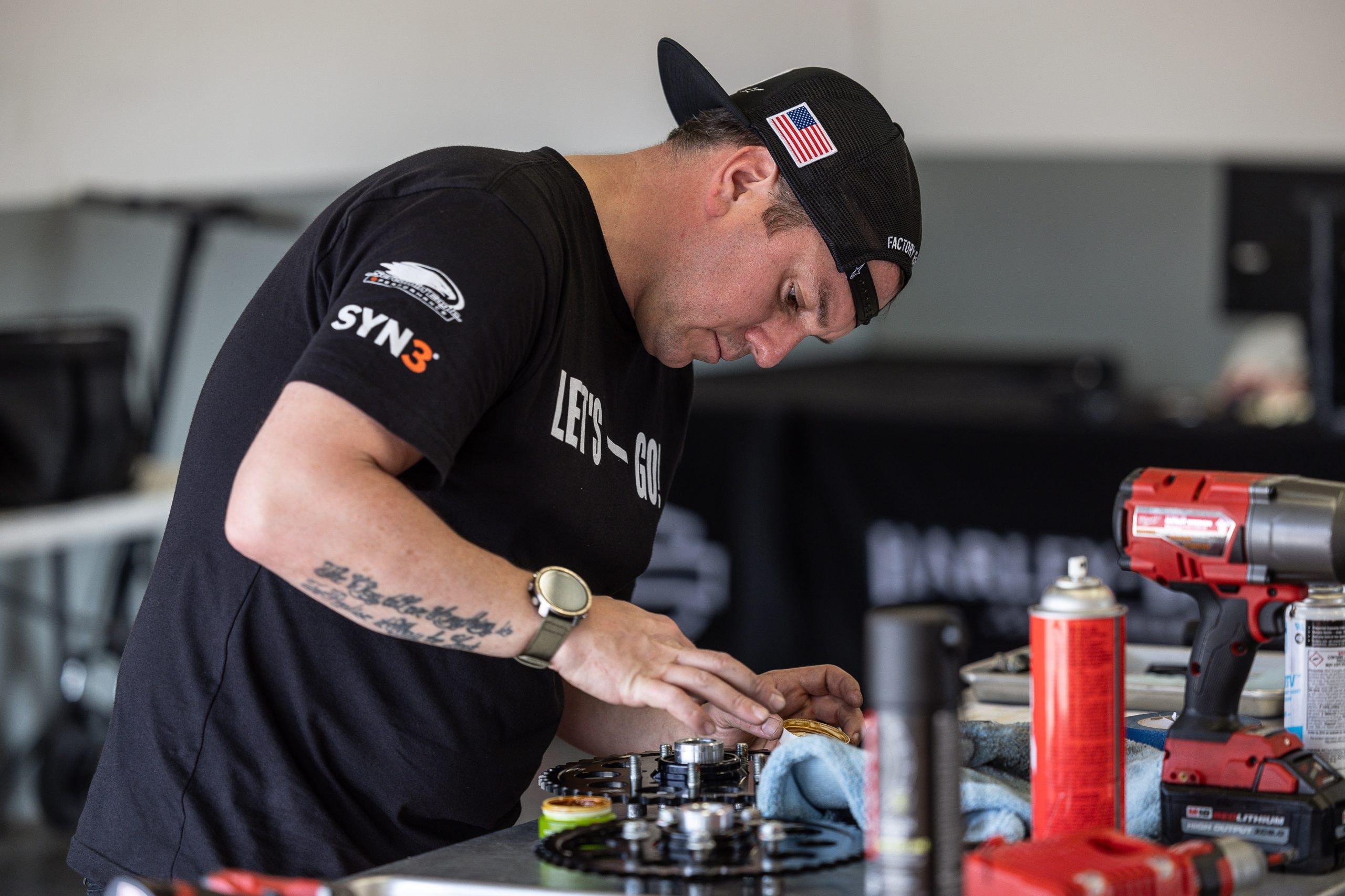
Q:
As you know, I was able to tour your race shop in June last year after Road America, and we visited the engine dyno area. I was surprised that you were doing simulations of Daytona. So, with what you learned from those simulations, did that help you at Daytona this year?
Kehl:
We were simulating laps around Daytona in the engine dyno, in terms of RPM, time at RPM, and variability at RPM. All of that was directly simulated. We spent a lot of time working on Daytona. But what it doesn’t simulate is the lean angle, the G forces, and it doesn’t as directly simulate engine cooling. We still primarily have an air-cooled engine.
In that controlled environment, you try to set engine temperature, and oil temperature to what you see on track, but it’s not as variable. So, it doesn’t directly simulate the actual ambient conditions. Which is part of the struggle with Daytona. I know everybody talks about it at the races there, but if you look at NASCAR, they have decades and decades of development work to be able to run consistently and reliability around banked, high-speed tracks like Daytona. We’re only in year three with our program at Daytona, and we are still learning every time we show up. We’re still evolving a street platform to do what it was never intended to do…go road racing!
Q:
Let’s just talk in a general sense about an internal combustion engine that goes around the 31-degree banking at Daytona. Essentially, the G forces are trying to push all the oil down to the bottom of the engine. Does that create a situation where the engine has to work even harder to pump that oil against those G forces back up into the top of the engine?
Kehl:
It does, yes. It’s extra hard for the engine, however it’s more where the oil is located at various times than the ability of the engine to pump it. The pumping forces are capable of overcoming the G forces. It’s where that oil is located at any given time, both in the oil sump as well as in the engine itself.
Q:
So, like in the dyno room, the engine is stationary and sitting straight up-and-down. But, on the banking at Daytona, the engine isn’t straight up-and-down. The G forces aren’t really pushing the oil to the bottom of the engine. It’s probably more off to one side a little bit, isn’t it?
Kehl:
Correct. If you look at a sportbike’s oil sump, for instance. They’re designed to be able to control oil at 60 degrees of lean angle, along with braking and acceleration forces. We’re going through all those same conditions, but with motors designed for street touring motorcycles. We don’t have a system that was designed to be able to brake at the force these guys are braking at, to accelerate at the forces they’re accelerating at, the lean angles that we’re at, or deal with the G forces.
This is another example of taking a production-based motorcycle and, one step at a time, turning it into a high-performance, road racing motorcycle. It is, in a lot of ways, what the value of racing is to Harley-Davidson, to learn in these extreme conditions which we normally don’t test in, how the motorcycle is performing. Now, that’s also not a condition that anyone can put their street bike in.
Q:
So, if your engines and your bikes can do that at Daytona, then anything that happens on the street, that a consumer can put your motorcycles through, they are not going to experience those extreme conditions. So, racing improves the breed. You guys experience conditions way worse than anything on the street, and it will show up in the fact that these bikes are going to be durable for anything that anybody on the street can put them through.
Kehl:
Absolutely.
Q:
Like you said, your Road Glide King Of The Baggers racebikes essentially have air-cooled engines. They rely on air flowing across the outside fins to cool them. When you are going at a high rate of speed, there’s friction, there’s all kinds of things that increase the heat, but the flow of air coming across the outside of the engines increases, too. It’s probably not inversely proportional, though, is it? In other words, the faster you go, the cooler the engine doesn’t become, right?
Kehl:
Correct. You get more airflow over the engine, but to go those speeds, to go 185.5 miles per hour, the amount of work the engine is doing to push a motorcycle as large and as heavy as a Road Glide racebike, and the air resistance at that speed is crazy high. So, to be able to push through that air takes much more work from the engine. The airflow cooling is great, and it increases with speed, but it doesn’t offset the amount of heat that’s generated to go that fast.
Q:
How much do changes in ambient air temperature affect the engines? When it’s warmer outside, even though the air is flowing across the engine, it’s still warmer air, right?
Kehl:
Correct. It’s very linear with our engines. The way our engines operate in the air cooling, one degree Celsius of ambient air temperature will cause our engine to run one degree Celsius warmer. Within its operating range, it is very linear.
Q:
It probably depends on the direction it’s coming from, but how do you deal with the wind? It was fairly windy at Daytona this year. Does it help or hurt?
Kehl:
It actually doesn’t have much impact on cooling. We prefer very little wind. The motorcycle is large, so the riders feel it. On a crosswind, the motorcycle catches it. Pushing through a headwind is pretty tough, with the increased surface area of these motorcycles.
Q:
Within the Mission King Of The Baggers Championship, you are the Factory Racing team for Harley-Davidson, but there are also some Harley-Davidson support teams like Vance & Hines and Saddlemen. Does having those teams also racing your motorcycles in MotoAmerica benefit the factory?
Kehl:
Yes, it’s a huge help and it goes both ways. But, at Daytona, especially, we wouldn’t have achieved what we did without the support we got from those teams, specifically Vance & Hines and Saddlemen. I leaned into them heavily at Daytona for both parts and troubleshooting data.
It was more than just our Factory Racing team; it was a true brand effort. They’re our competitors on the racetrack, but they are amazing partners to have in the paddock, helping to sustain the Harley-Davidson brand, improve the state of the art, and grow the Mission King Of The Baggers Championship. I can’t say enough positive things about David Echert from Saddlemen, and Terry Vance from Vance & Hines Motorsports. We are honored to have them representing our brand. So, big, big thanks to them.
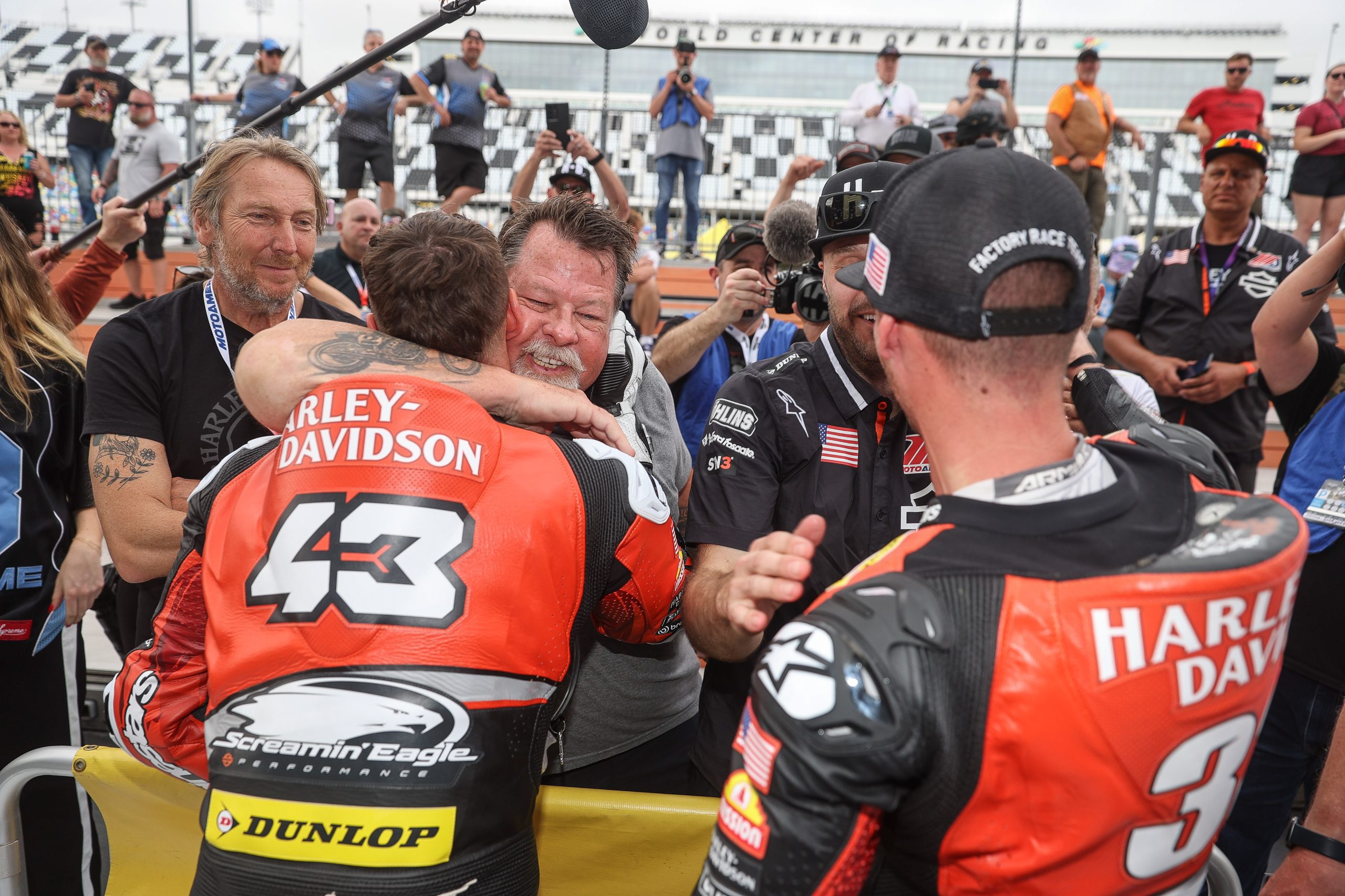
I feel an immense sense of pride every time we roll out with the name of our founders on the side of our gas tanks. Yet nothing is more rewarding than to be part of a team rallying together under such intense pressure. This Harley-Davidson team is nothing more than a group of people filled with passion for motorcycling, and an attitude to do whatever it takes to ensure William Harley, and Walter, Arthur, and Bill Davidson are proud of what we are doing. I’d like to think that some 121 years after they started this great company, they’d not only smile at the audacity of what we are doing, but if they could, they’d roll up their sleeves, tuck in their ties, and work through the night alongside us. And they’d love every minute of it!
For the full 2024 MotoAmerica schedule and to purchase tickets for MotoAmerica events, click HERE
For information on how to watch the MotoAmerica series, click HERE


